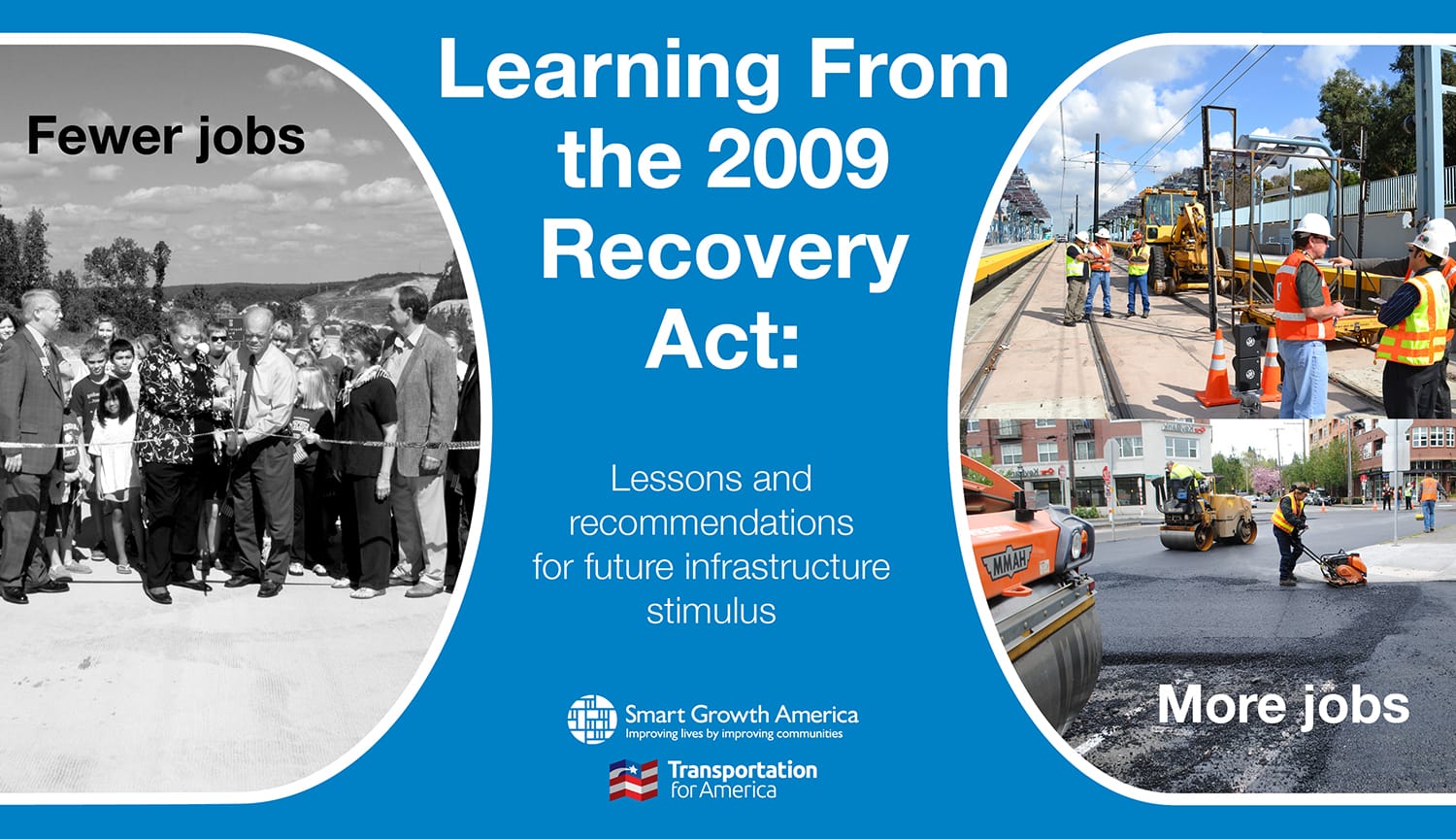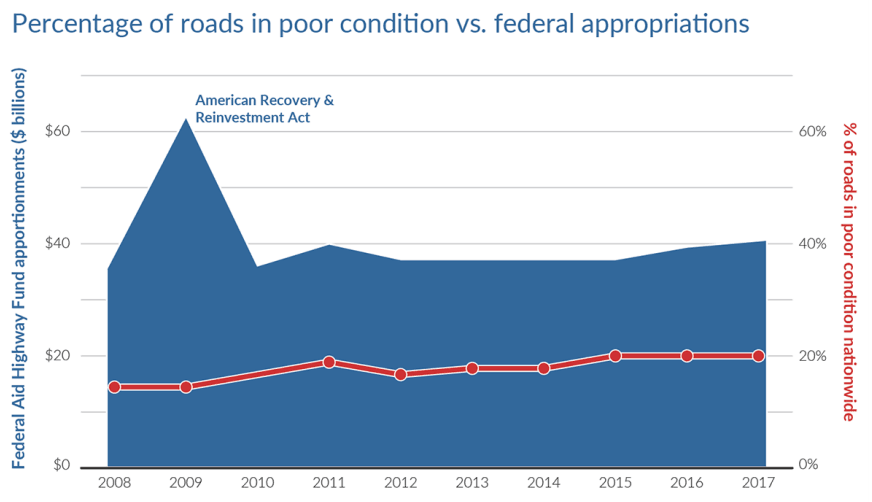
News
By Steve Davis, April 16, 2020

While there are enormous needs for relief and support all across the economy, the president and many congressional leaders have indicated that they want infrastructure to be a major part of a future stimulus bill. If Congress does intend to use infrastructure spending to create jobs and support recovery, their own effort in 2009 has some clear lessons they should learn from.
As we tried to claw our way out of the Great Recession a decade ago, Congress gave states billions in new funding for transportation capital projects in the American Recovery and Reinvestment Act (ARRA), better known as the stimulus. With a COVID-19 recession all but certain, America will need another stimulus. To help Congress and the public learn from our last attempt to create jobs and support economic recovery through infrastructure investments, our short new report provides six lessons and six recommendations from our deep experience evaluating the Recovery Act over 10 years ago.
Because the purpose of the Recovery Act was to create jobs, states were required to report how they spent that money, and how many jobs they created with it. Which means we have good data to use, based on state-reported documentation of how they spent ARRA money, and how many jobs their stimulus-funded projects created.
Did states take advantage of the flexibility given to them by Congress to invest in ways that would create the maximum number of jobs? Did Congress select programs for funding that were well-suited to the primary task of job-creation? The two biggest overall lessons gleaned from our review are:
- The Recovery Act was meant to create jobs above all else, but that was not how we targeted or governed the infrastructure spending.
- In an attempt to do things quickly, Congress defaulted to existing programs that were poorly tailored to the tasks at hand.
 As our Repair Priorities report showed, even with the extra $26 billion for surface transportation kicked in all at once, the country’s roads still got worse, not better. That’s because our federal transportation program gives states billions each year without even the most basic requirement for them to repair what they have before building anything new. The 2009 stimulus was no different. Set free of any obligation to address their repair needs first with stimulus dollars, scores of states failed to prioritize repair with their ARRA funds, choosing new construction instead. Eleven states spent less than half of their money on repair, and nine of those states had worse roads in 2017 than in 2009.
As our Repair Priorities report showed, even with the extra $26 billion for surface transportation kicked in all at once, the country’s roads still got worse, not better. That’s because our federal transportation program gives states billions each year without even the most basic requirement for them to repair what they have before building anything new. The 2009 stimulus was no different. Set free of any obligation to address their repair needs first with stimulus dollars, scores of states failed to prioritize repair with their ARRA funds, choosing new construction instead. Eleven states spent less than half of their money on repair, and nine of those states had worse roads in 2017 than in 2009.
This failure of stewardship was also a missed opportunity to have the greatest impact on creating jobs. A wide variety of other research consistently finds that on average, road repair produces 16 percent more jobs per dollar than new road construction. This makes sense considering the fact that new roadways and roadway expansions usually require right-of-way acquisition, which creates very few jobs (and no construction jobs), as well as more planning and environmental review, which also creates just a few jobs. Repair also takes care of an existing asset, saving money in the long run. Expansion creates a pricey new liability.
If Congress is interested in having the greatest impact, requiring repair with any stimulus dollars first is possibly the single best way to maximize the impact.
The second would be to invest heavily in transit, including repair. In this analysis we found that an ARRA dollar spent on public transportation produced 70 percent more job hours than an ARRA dollar spent on highways. Each mode showed clear differences in jobs produced per dollar: Transit preventive maintenance had by far the highest direct job-per-dollar result for transit, followed by rail car purchase and rehabilitation, infrastructure, and bus purchase and rehabilitation.
The CARES Act addressed enormous, immediate needs across the country by providing emergency support for transit operations. Without that kind of support, transit service might not survive to continue carrying essential workers to their jobs, and certainly won’t be around to help fuel an economic recovery.
As Congress and the nation debate the next phase of stimulus, we can and should benefit from the lessons we learned from the last stimulus. Some kinds of spending create more jobs, faster, than others. Limiting spending to capital only (and leaving out operations as ARRA mostly did) not only eliminates one of the most productive forms of spending, but it also creates future costs and slows the speed of economic recovery.
We should direct federal infrastructure dollars to the types of projects that create what we need. In the face of unprecedented unemployment, that means projects which create the most jobs the fastest, and those that connect people to as much economic opportunity as possible.
This will mean public transit—especially operations and repair—and road repair.
Lessons are of little use if we don’t learn from them. We hope Congress takes note of their own history here with any potential infrastructure recovery package.
Message from the Director
For those of you who were involved in implementing Recovery Act programs, engaged in advocacy on the stimulus, or worked to analyze how those billions were spent in some way, we also want to hear what you learned. Hear about the report briefly from Beth Osborne, the director of our Transportation for America program, who also has some questions for those of you who experienced the stimulus firsthand.
Share your lessons from the stimulus
As Beth requests in the video, we want to hear from you: Share your experience or lessons learned from the 2009 stimulus with the form below.
Related News

© 2025 Smart Growth America. All rights reserved
Site By3Lane Marketing










